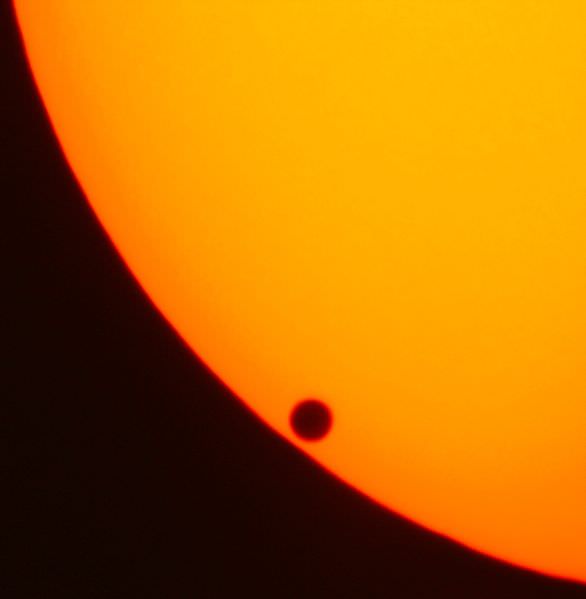[/caption]
Venus is the second planet from the Sun, orbiting at an average distance of 108.2 million km. Venus takes a total of 224.7 days to orbit the Sun.
The Sun and Venus are vastly different sizes, of course. The diameter of Venus is 12,103 km, while the diameter of the Sun is 1.4 million km. In other words, the Sun is 115 times larger than Venus. You could fit about 1.5 million planets the size of Venus inside the Sun.
Venus is a terrestrial planet. It has a metal core surrounded by a mantle of silica rock. This is surrounded by a thin crust of rock. The Sun, on the other hand, is a massive ball of hydrogen and helium gas. Temperatures at its core are hot enough to ignite nuclear fusion – more than 15 million Kelvin.
The Sun has an enormous impact on Venus. The radiation from the Sun is trapped by the thick atmosphere of Venus, raising average temperatures across the planet to around 460 °C. In fact, this makes Venus the hottest planet in the Solar System.
Both the Sun and Venus formed at the same time, 4.6 billion years ago, with the rest of the Solar System. They formed out of the solar nebula, a cloud of gas and dust that collapsed down to become the Sun and planets.
Because Venus orbits closer to the Sun than the Earth, we always see it close to the Sun in the sky. Venus is either trailing the Sun or leading it across the sky. The best times to see Venus are just before sunrise or just after sunset.
We have written many articles about Venus for Universe Today. Here’s an article about Venus’ wet, volcanic past, and here’s an article about how Venus might have had continents and oceans in the ancient past.
Want more information on Venus? Here’s a link to Hubblesite’s News Releases about Venus, and here’s a link to NASA’s Solar System Exploration Guide on Venus.
We have recorded a whole episode of Astronomy Cast that’s only about planet Venus. Listen to it here, Episode 50: Venus.
References:
NASA ISTP: Venus
NASA StarChild: Facts on Venus
NASA Facts: Magellan Mission to Venus

